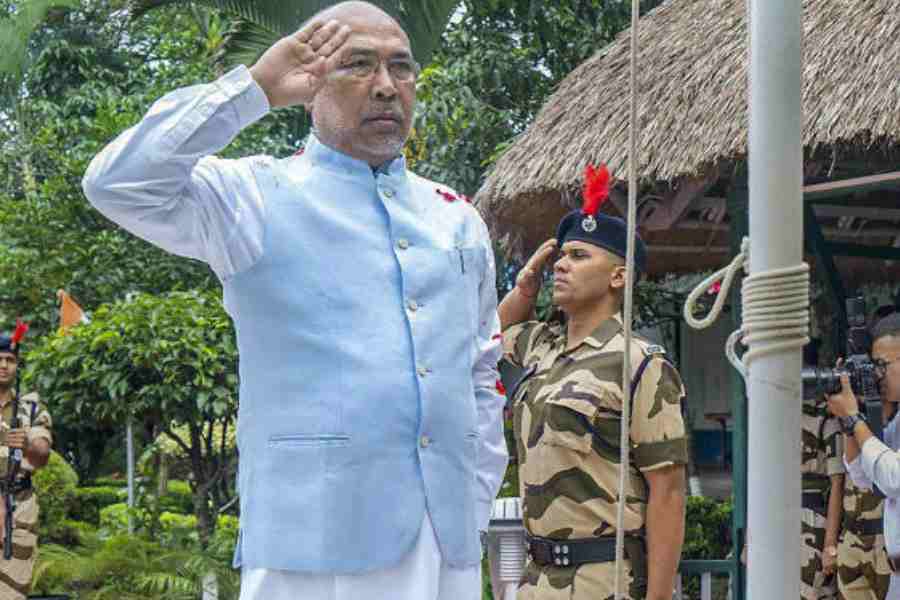The Narendra Modi government’s failure to quell the mayhem in Manipur and aggressive attempts to muzzle dissent on a range of festering issues have forced a global credit rating agency to shine a light on a tinderbox of political risks that overshadow India’s much-vaunted economic growth story.
In an uncharacteristically hard-hitting assessment of India’s charged political climate, Moody’s Investor Service said: “The curtailment of civil society and political dissent, compounded by rising sectarian tensions, support a weaker assessment of political risk and the quality of (its) institutions.”
Credit rating agencies usually focus on economic issues rather than political risks while assessing the credit rating of stable nations that profess faith in democratic principles.
Until now, most global rating agencies have expressed concerns over India’s fiscal deficit, rising inflation and growing trade imbalances while making their credit rating assessments.
Moody’s has shifted focus to issues that the Modi government has either brushed under the carpet or where it has aggressively smothered criticism.
“Although elevated political polarisation is unlikely to lead to a material destabilisation of government, rising domestic political tensions suggest an ongoing risk of populist policies — including at the regional and local government levels — amid the prevalence of social risks such as poverty and income inequality, as well as inequitable access to education and basic services. Moreover, the periodic flaring of border tensions with neighbouring countries was an outlier among sovereigns assessed as having a lower overall susceptibility to political risk,” it added.
Moody’s brutal assessment of India’s political risks sends out a clear warning to foreign investors whom Modi is desperately trying to woo to bring his faltering Make-in-India programme back on the rails.
The agency, however, re-affirmed its Baa3 rating for the Government of India’s long-term local and foreign-currency issuer ratings and the local-currency senior unsecured rating. It said the outlook was stable.
But Moody’s warned that “an escalation of political tensions and/or a further weakening of checks and balances that would undermine India’s long-term growth potential would likely contribute to a downgrade (of its credit rating)”.
This is the first credit rating assessment by a global agency since disturbing reports and videos from Manipur started to emerge.
Moody’s described Manipur as “one of the most impoverished states in India” that had witnessed “at least 150 deaths since May 2023”.
The finance ministry has been badgering the global agencies to raise India’s credit rating, contending that the world’s fifth largest economy deserves to be given a respectable investment grade credit rating.
However, all the credit rating agencies — Moody’s, Fitch and Standard and Poor’s — have assigned to India the lowest investment grade rating, just one rung above a so-called junk bond.
Back in May, Fitch Ratings gave India a BBB- credit rating with a stable outlook —again a rung above junk bond rating. But it did not raise a whisper about political risks, choosing instead to focus on India’s weak public finances, high deficits and debt relative to peers, and poor governance indicators.
In the same month, S&P affirmed a BBB- long-term rating for India while retaining a stable outlook. It said it would consider a higher rating for India — which prides itself on being the fastest-growing major economy — if it could improve its fiscal metrics and drive inflation lower. It also chose not to talk about political risks and ebbing civil liberties in India.
Snide remark
Moody’s said it expected India’s economic growth to outpace all the G20 nations over the next two years at the very least. Driven by domestic demand, it forecast that the Indian economy would grow at a potential 6 to 6.5 per cent from less than 6 per cent during the pandemic.
But it also passed a snide remark by saying that the current growth projection remained “lower than estimates in excess of 7 per cent in the middle of the last decade”.
This will raise more hackles on Raisina Hill as the Modi government has consistently slammed economists like Arvind Subramanian, Raghuram Rajan and Sudipto Mundle who maintained that growth rates were higher during the UPA regime.
Back in 2018, Mundle had stirred a hornet’s nest when he claimed that the growth in gross value added (GVA) — the metric adopted when the new GDP series was adopted on January 29, 2015 — was the highest in 2006-07 at 10.08 per cent during the third year of the UPA-I regime.
In its latest report, Moody’s hoped that India’s high GDP growth would gradually raise income levels and aid overall economic resilience.
“In turn, this will support gradual fiscal consolidation and government debt stabilisation, albeit at high levels. In addition, the financial sector continues to strengthen, alleviating much of the economic and contingent liability risks that had previously driven downward rating pressure,” Moody’s said.











